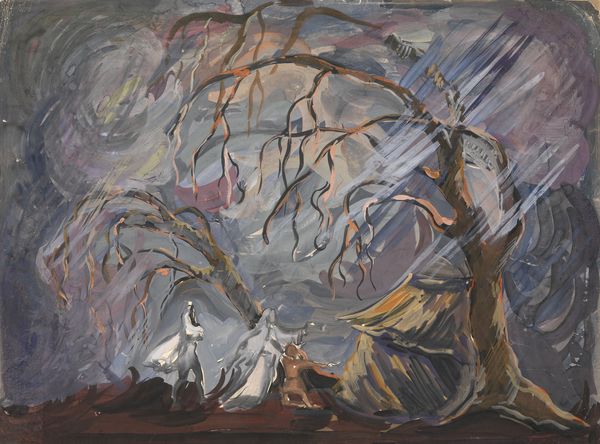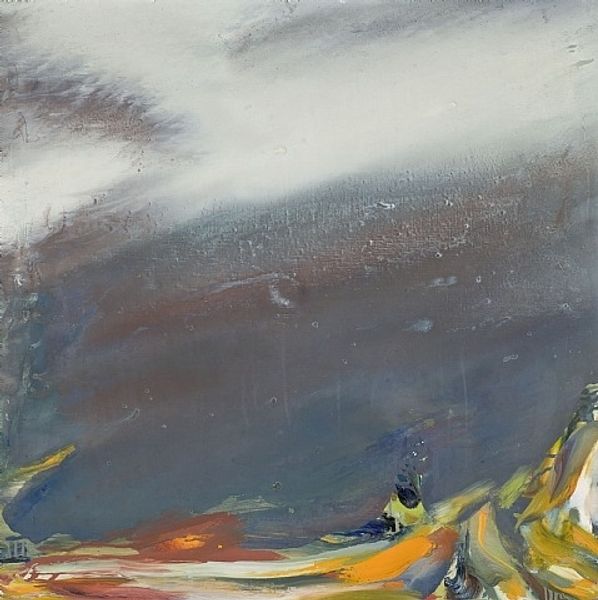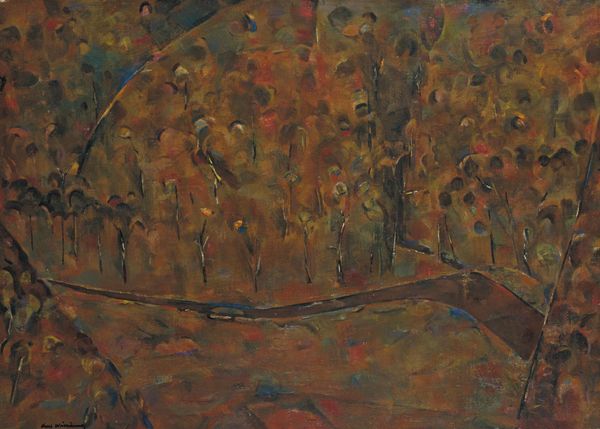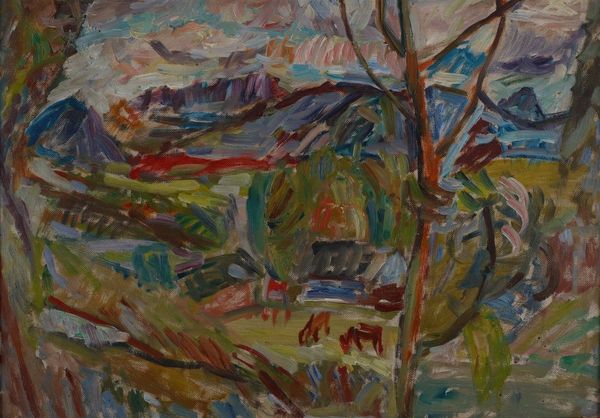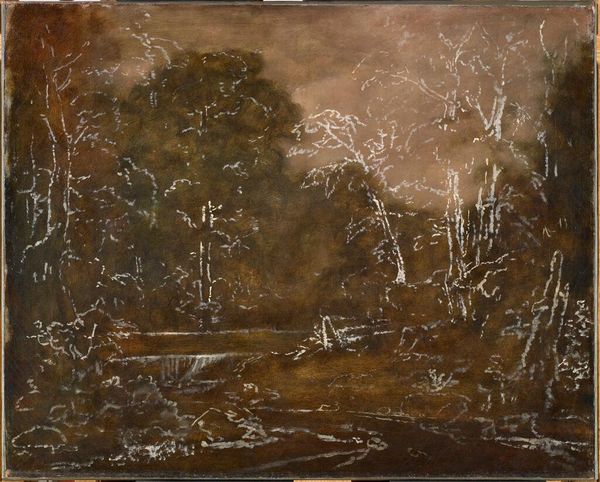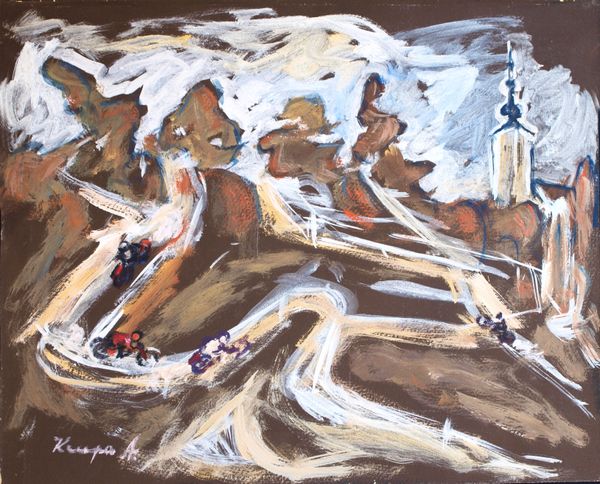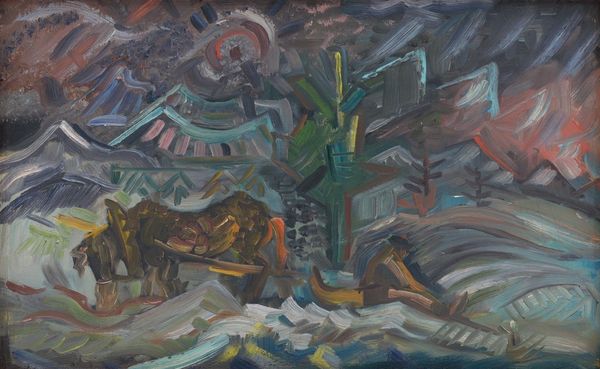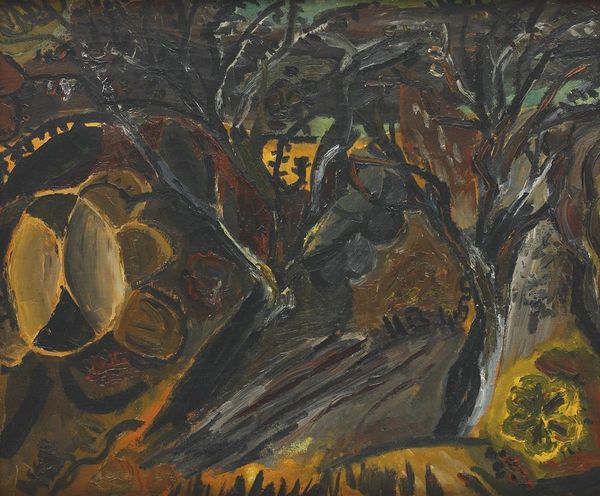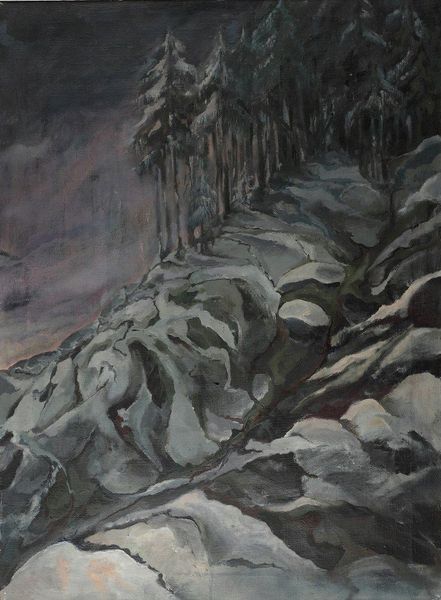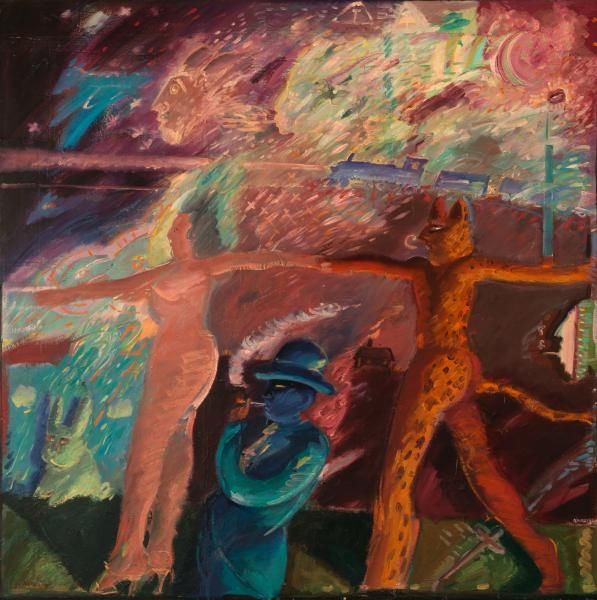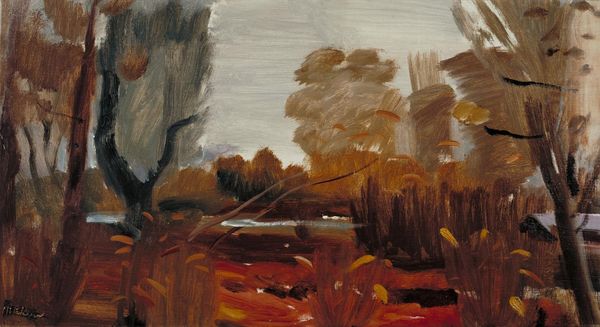
Copyright: Public domain
Curator: Standing before us is "Hunters Under a Tree," or "Myslivci pod stromem" as it's known in Czech, an oil painting by Josef Čapek, dating from 1937. It's fascinating to consider what artists are drawn to, especially given world events at the time. Editor: My first thought is "eerie pastoral." Those swirling brushstrokes in the sky—they feel less like a landscape and more like a gathering storm. A bit unsettling, wouldn't you agree? The palette seems subdued but active; and the texture—oooh! you can almost feel it. Curator: Absolutely. Čapek wasn’t just capturing a scene; he was exploring the essence of what it *felt* like to be in that scene, those times. See how the tree's branches almost reach out, framing the hunters below? Editor: Yes, the tree, monumental! Reminds me of images of the "axis mundi," the world tree connecting earthly and spiritual realms. The hunters could be seen as symbolically situated between these two worlds. And then that little red lamp adds an interesting touch—a guiding light or a warning? It lends an almost allegorical feel to what might initially seem like a genre scene. Curator: The color red repeats on the seated boy, so that's interesting in itself; perhaps directing attention to an introspective contemplation before nature's majesty and might? Čapek's work often wrestled with existential themes through seemingly simple subjects. Remember he and his brother, Karel, invented the word 'robot'? Editor: Yes! Even something as ordinary as hunting becomes loaded with symbolic potential, hinting at humanity's role in nature. Čapek certainly infused the commonplace with deeper meanings. This feels prophetic, almost, considering his tragic fate during the war. He perished in Belsen, remember. Curator: Right. So it reframes how we see this now doesn't it? This hunting scene becomes more about the hunt of humans by humans... What initially reads as a peaceful tableau now carries a powerful historical weight. Editor: I agree. The symbolic depth, viewed through today's lens, renders "Hunters Under a Tree" both haunting and vital. It’s a reminder of art's ability to hold and reflect complex truths through visual language. Curator: Ultimately, what feels expressionistic initially, might reflect an early modern mood; where artists became concerned with capturing more ephemeral moments in time while also embedding symbols from broader, perhaps subconscious anxieties, of what would then unfortunately befall them in Europe.
Comments
No comments
Be the first to comment and join the conversation on the ultimate creative platform.

